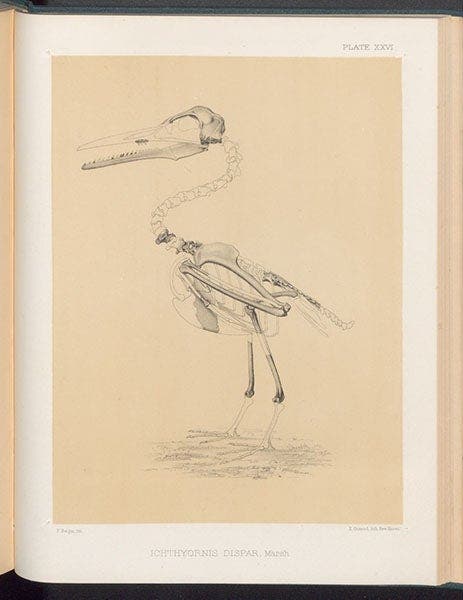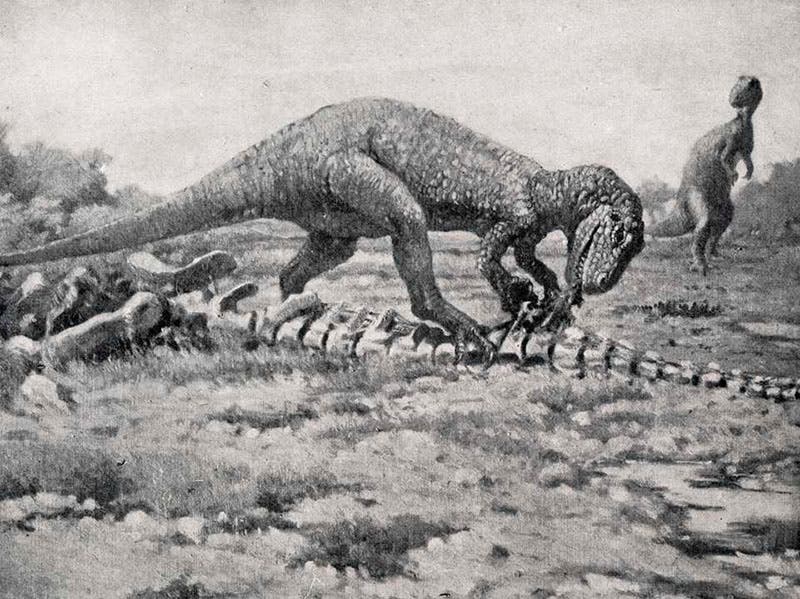Scientist of the Day - Benjamin Mudge
Benjamin Franklin Mudge. an American naturalist and geologist, died Nov. 21, 1879, at the age of 62. Mudge was born in Maine, then moved to Lynn, Mass., where he would live and work for nearly 20 years. Being raised a Methodist (his 3 older brothers were all members of the Methodist clergy), he attended Wesleyan University in Middletown, Conn., a Methodist college just founded in 1831. He graduated in 1840, 120 years before I set foot on the Wesleyan campus (no longer Methodist) to begin my own undergraduate career. Mudge practiced law in Lynn for a decade and a half, and began to build up a large collection of natural objects, such as fossils. He was even mayor of Lynn for a while, before he headed to Kentucky, for reasons unknown, and then, when the Civil War broke out, to the Free State of Kansas, where he would make his scientific mark,
In 1864, the Kansas state legislature was apparently trying to decide whether to establish a geological survey, as many eastern states had already done, and Mudge, again for reasons unknown, was asked to give a short series of lectures on economic geology to the legislators in Topeka. His lectures were such a success that a Geological Survey was established in 1864 and Mudge was invited to be the first State Geologist for Kansas. He supposedly conducted a survey and issued a report. We have quite a collection of Bulletins and such of the Kansas State Geological Survey in our Library, and I browsed through them on the shelves, but I was unable to find anything before the 1890s, when the Survey was re-established. So I have no idea what was in those early reports. But by this time, Mudge was a professor at the Agricultural College of Kansas in Manhattan (now Kansas State University), and he was a much beloved teacher to his students, as his obituaries attest. He also transferred his entire cabinet of curiosities to the college in Manhattan.
Mudge is known today for three important fossil discoveries. In 1871, he found in Kansas the fossil remains of a Cretaceous toothed bird. He sent the fossil to Othniel Marsh at Yale College, who had already found a Kansas toothed bird of his own. Mudge’s was named by Marsh, Ichthyornis dispar, and announced in 1875, along wih his own toothed bid, Hesperornis regalis. We discussed Marsh’s work on toothed bids in a post three weeks ago, and showed his published lithographs of both Ichthyornis and Hesperornis. Since we have little in the way of graphics for Mudge, we show Marsh’s two images of Mudge’s Ichthyornis again here (second and third images).
Mudge’s other two discoveries were made, not in Kansas, but near Cañon City, Colorado, at a site later named Garden Park quarry, where he worked in 1877 with his student, Samuel Wendell Williston, who merited his own post this past summer. Mudge and Williston found fragments of two unknown reptiles, and both went to Mash at Yale, where they acquired accession numbers. The first became known as YPM VP 1920 (Yale Peabody Museum, Dept. of Vertebrate Paleontology, specimen number 1920), and Marsh later named it Diplodocus, which would become one of the most famous dinosaur fossils of the entire century, especially after men working for Andrew Carnegie found an entire skeleton 22 years later. The other set of fragments found by Mudge and Williston was identified as a carnivorous dinosaur by Marsh and named Allosaurus fragilis (YPM VP 1930). This dinosaur would also become well-known later, when many complete fossil skeletons were unearthed in Garden Park Quarry and in Como Bluff, Wyoming. One of these was placed on display at the American Museum of Natural History in New York in 1907, munching on a dead sauropod, where it was painted by Charles Knight (fourth image).
So that was about it for Benjamin Mudge, before his sudden death from a stroke in 1879, while reading King Lear wtih his wife. Hardly anyone remembers him today, although the Dept. of Entomology at K-State held a “Mudge Week” a while back, since Mudge apparently taught the first class on injurious insects in the entire country. But as the discoverer of Allosaurus and Diplodocus, he deserves at least a little fame. I hope he is getting that today.
William B. Ashworth, Jr., Consultant for the History of Science, Linda Hall Library and Associate Professor emeritus, Department of History, University of Missouri-Kansas City. Comments or corrections are welcome; please direct to ashworthw@umkc.edu.










